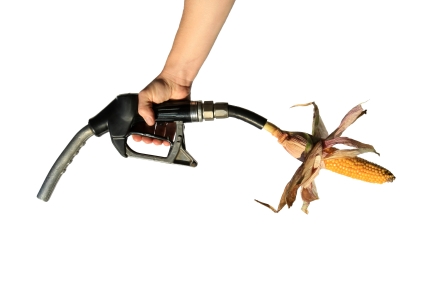
Agricultural News
New University Analysis: No Changes Needed to 2014 and 2015 Renewable Fuel Requirements
Fri, 03 Jan 2014 15:32:24 CST

The Environmental Protection Agency's (EPA) proposal to slash 2014 Renewable Fuel Standard (RFS) blending requirements is unwarranted, according to a new analysis released today by Iowa State University's Center for Agricultural and Rural Development (CARD). The 16-page report shows that 2014 statutory RFS requirements could be easily met with no new investment in refueling infrastructure, and 2015 requirements could be achieved with only modest infrastructure investments.
In November, EPA proposed to reduce the 2014 requirement for renewable fuel by 10 percent from the statutory level of 14.4 billion gallons to just 13 billion gallons. The Agency cited the so-called E10 "blend wall" as the key factor in its decision to propose the cut.
According to CARD economists Bruce Babcock and Sebastien Pouliot, "-the assumption by EPA that a 14.4 billion gallon ethanol mandate in 2014 was not feasible is not correct. -meeting a 14.4 billion gallon ethanol mandate is feasible in 2014 with no new stations, modestly lower E85 prices, and judicious use of available carryover RINs."
The analysis details why setting the 2014 blending requirements below the so-called "blend wall" results in a self-fulfilling prophecy that stunts any future growth potential in domestic ethanol consumption. In essence, EPA's proposal would kill the economic incentive provided by Renewable Identification Number (RIN) credits to expand E15 and E85 refueling infrastructure.
"Our results demonstrate that the number of stations that sell E85 will not increase until EPA sets ethanol mandates beyond E10 levels," the report states. "If increased mandates need to wait for the stations to be built, mandates will never increase. -The key point is that creation of sufficient demand to meet ethanol blending targets that exceed E10 levels is contingent on EPA setting mandates sufficiently high to incentivize the investments in fueling infrastructure that allow the targets to be met."
Setting the 2014 blending requirements at the levels envisioned by Congress would restore the economic incentive to expand E15 and E85 infrastructure and thus would help facilitate compliance with both 2014 and 2015 statutory requirements.
"Adopting a 14.4 billion gallon ethanol mandate would send a clear signal that EPA is not locked into keeping ethanol mandates below E10 levels. It would also increase RIN prices enough to incentivize investments in new E85 stations that would give EPA the freedom to move the ethanol mandate to 15 billion gallons in 2015," the authors write. "The 14.4 billion gallon mandate level in 2014 is feasible to achieve even if no new E85 stations are added. Adding stations would lower the cost of meeting the 14.4 billion gallon mandate and, more importantly, would allow EPA to increase mandates by even more in the future."
The analysis found that if EPA set the 2014 requirement for renewable fuel at 14.4 billion gallons, and no new E85 or E15 stations were added, RIN prices could be expected to average 69 cents each. However, adding 500 additional E85 stations in 2014 would reduce RIN prices to just 18 cents apiece.
"This drop in RIN price represents more than a $7 billion drop in the total value of RINs that would be used for compliance in 2014. The cost of adding the addition stations would be $65 million," according to the report. "This dramatic decrease in the total cost of RINs from adding new E85 stations is what gives EPA the tool they need to incentivize the investments that would facilitate expanded ethanol mandates."
The new paper, along with several other recent analyses on the RFS, is available on the CARD web site.
WebReadyTM Powered by WireReady® NSI
Top Agricultural News
More Headlines...



















